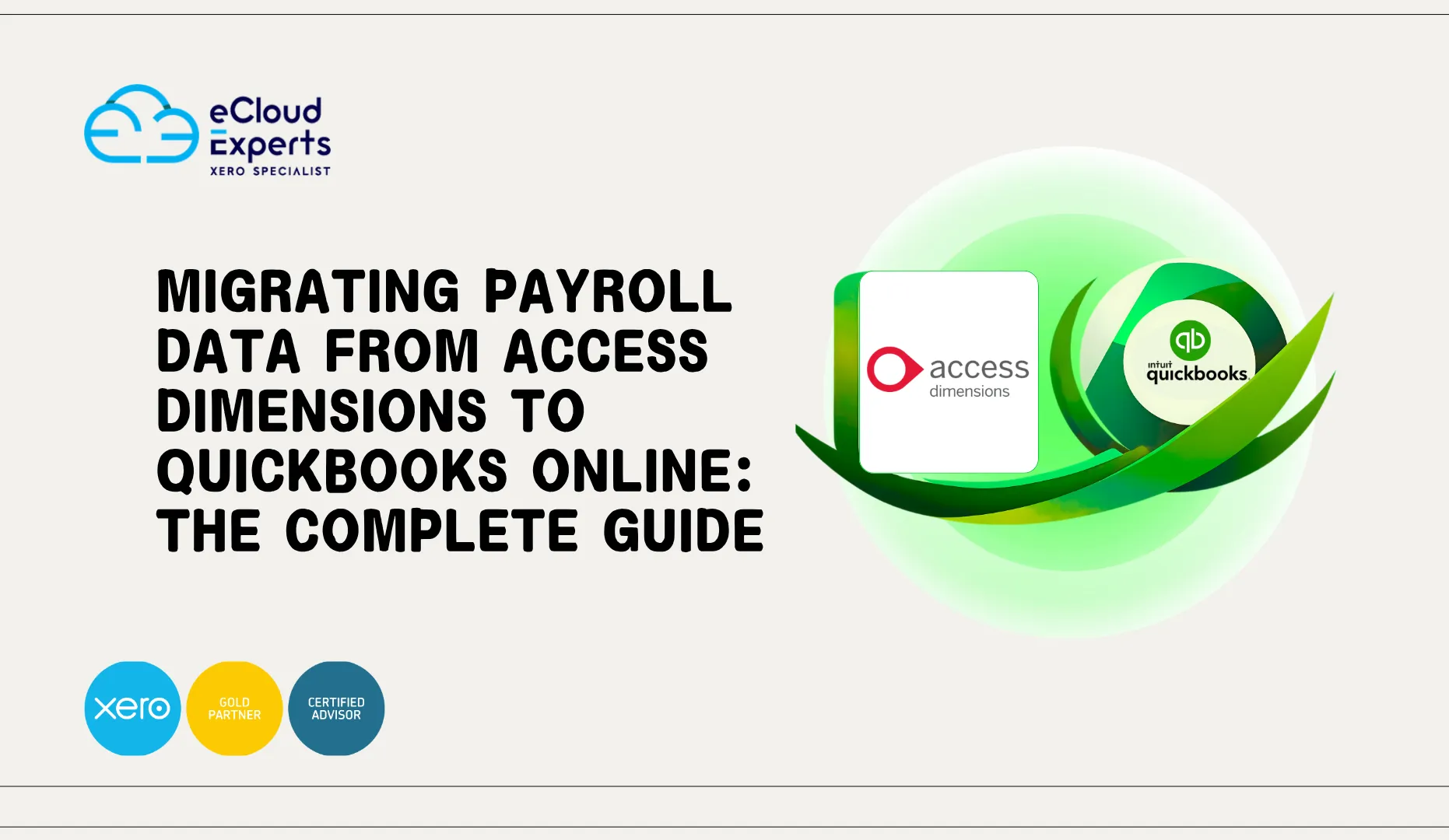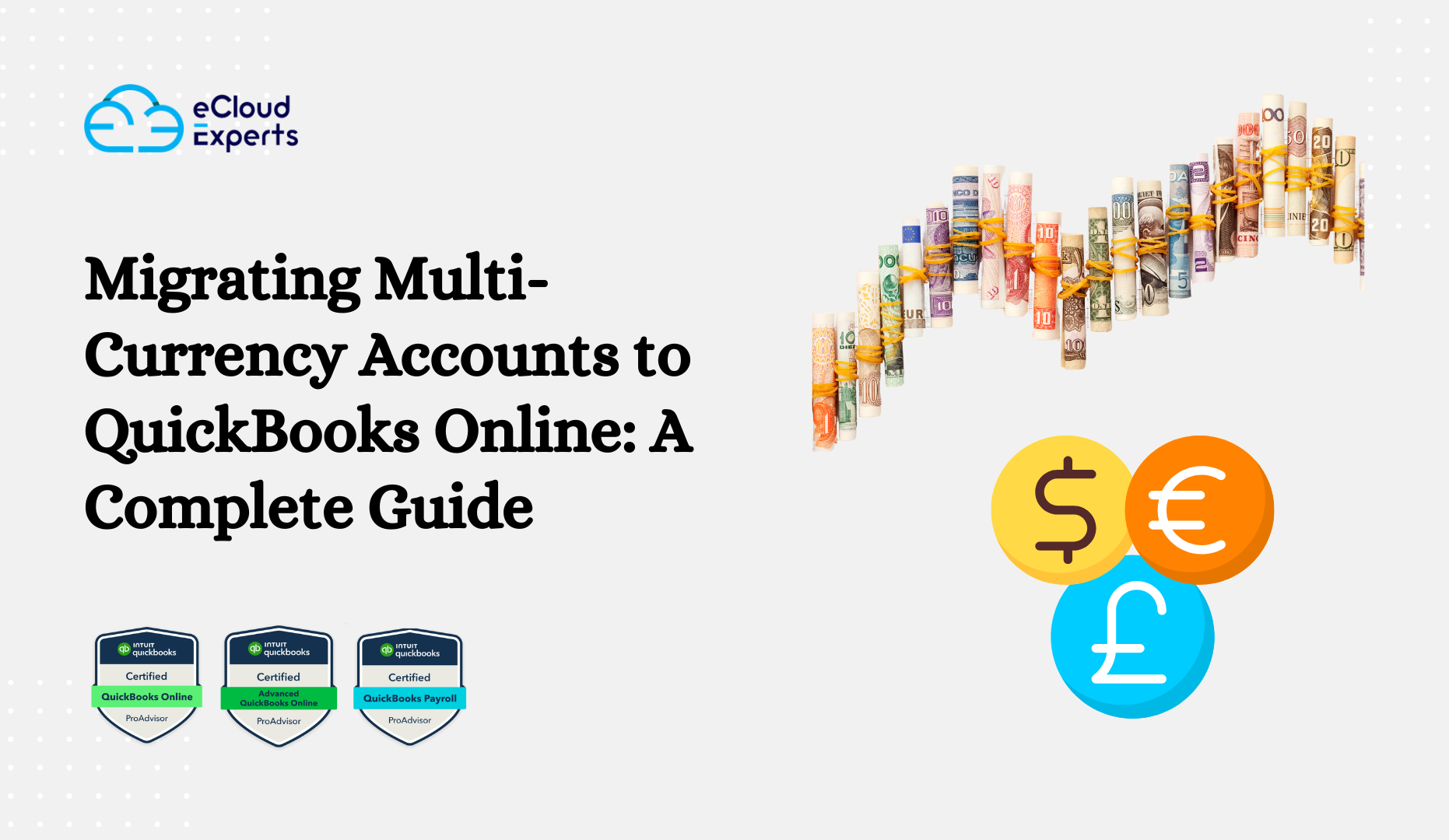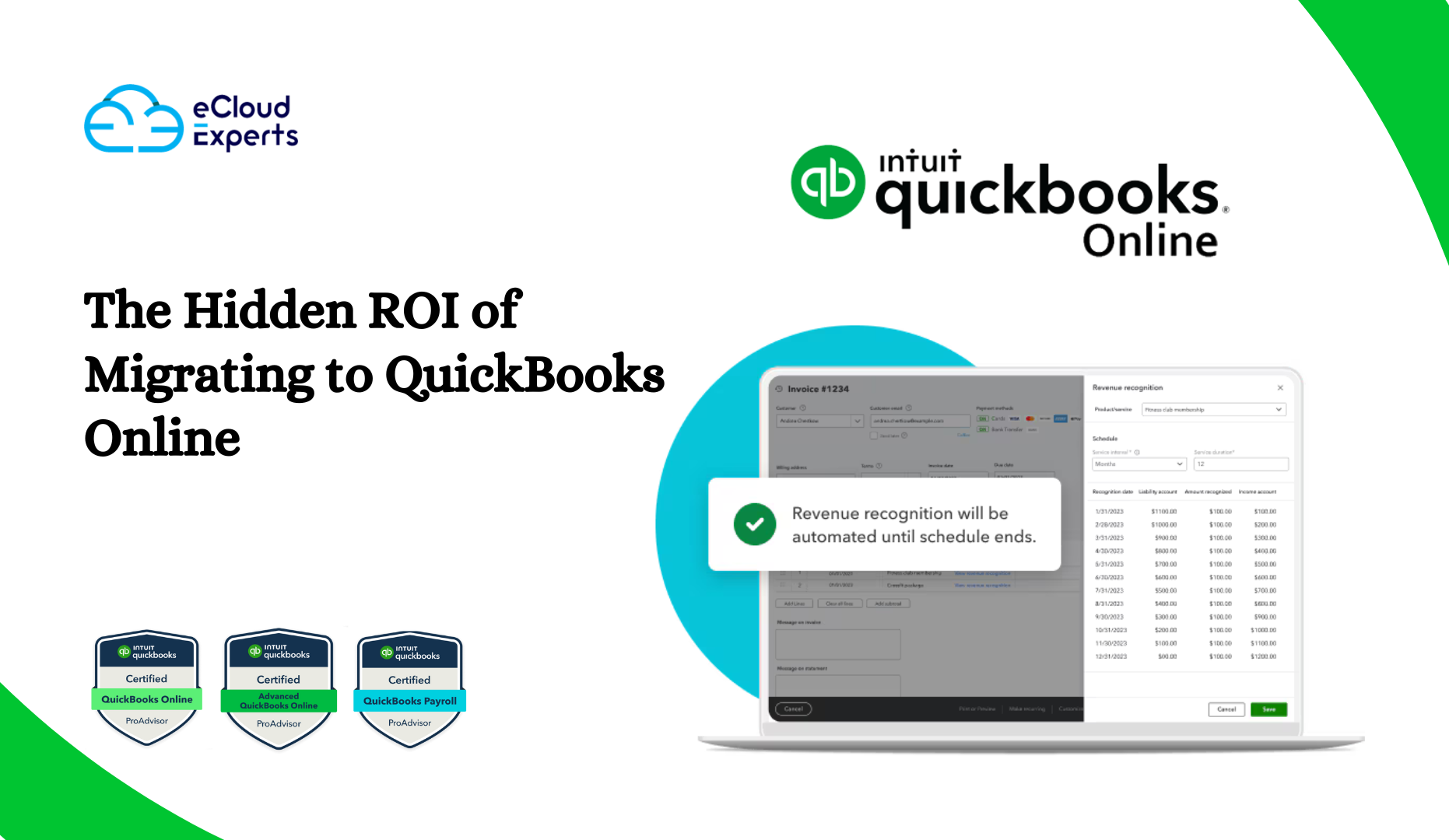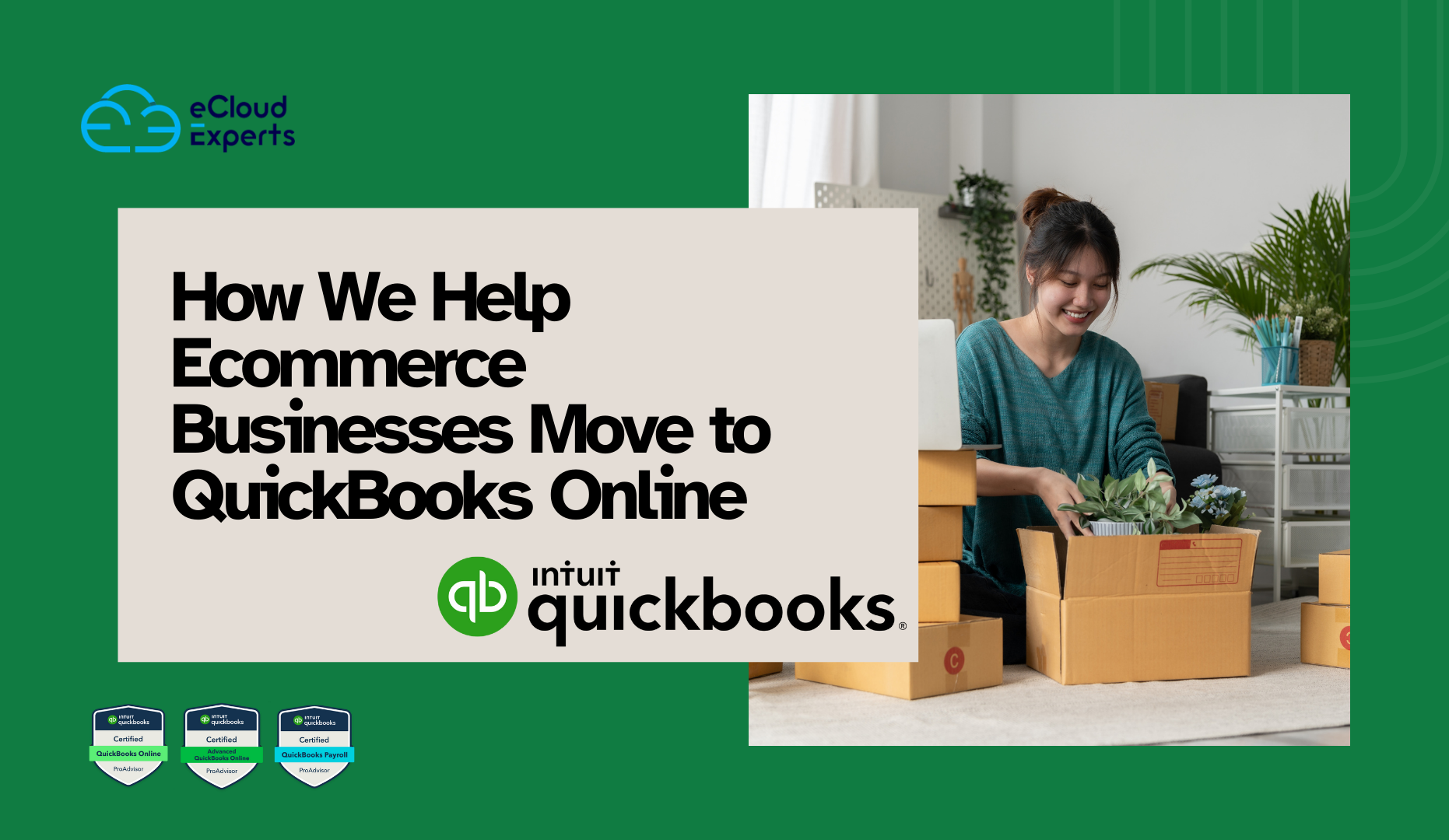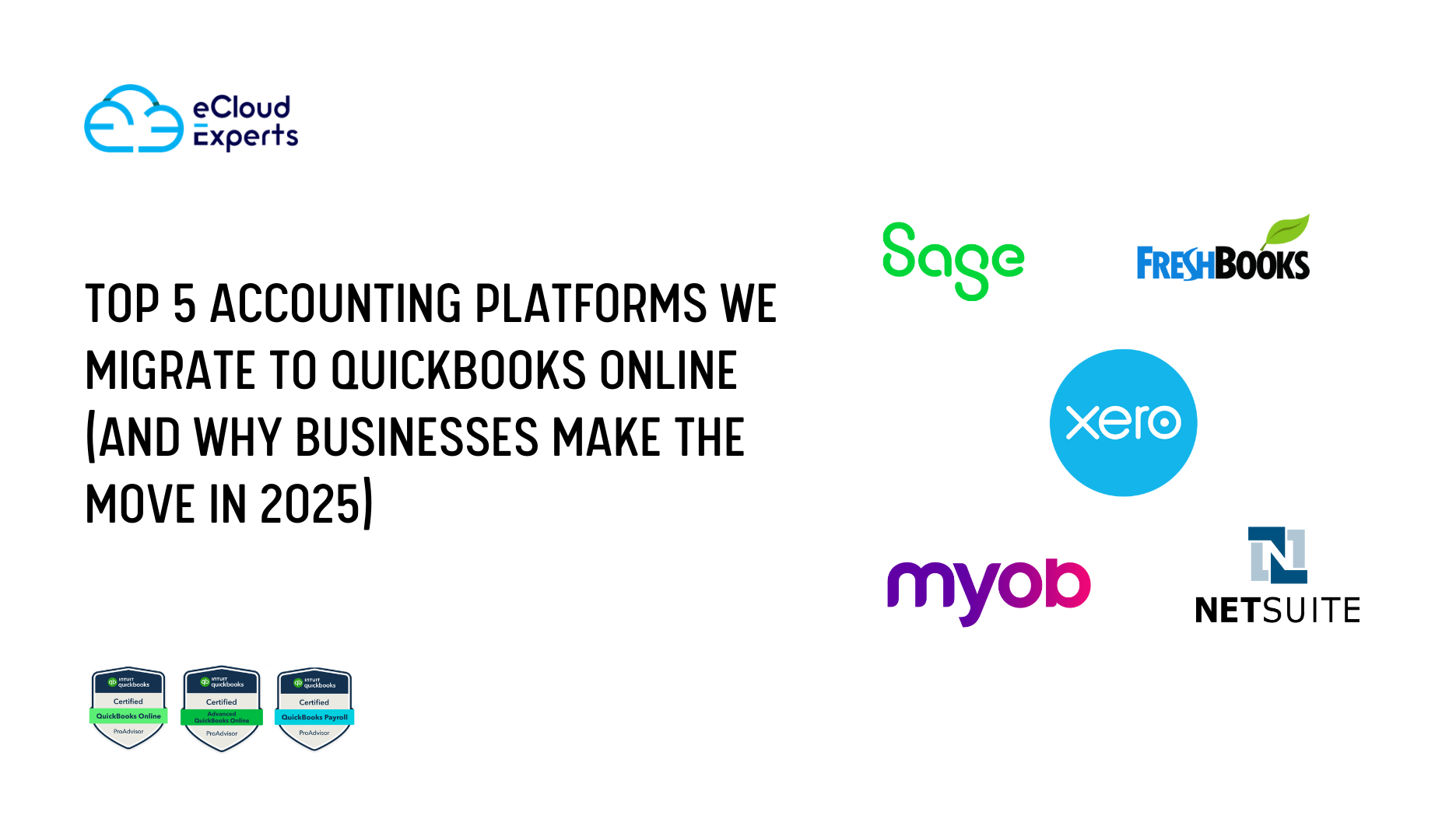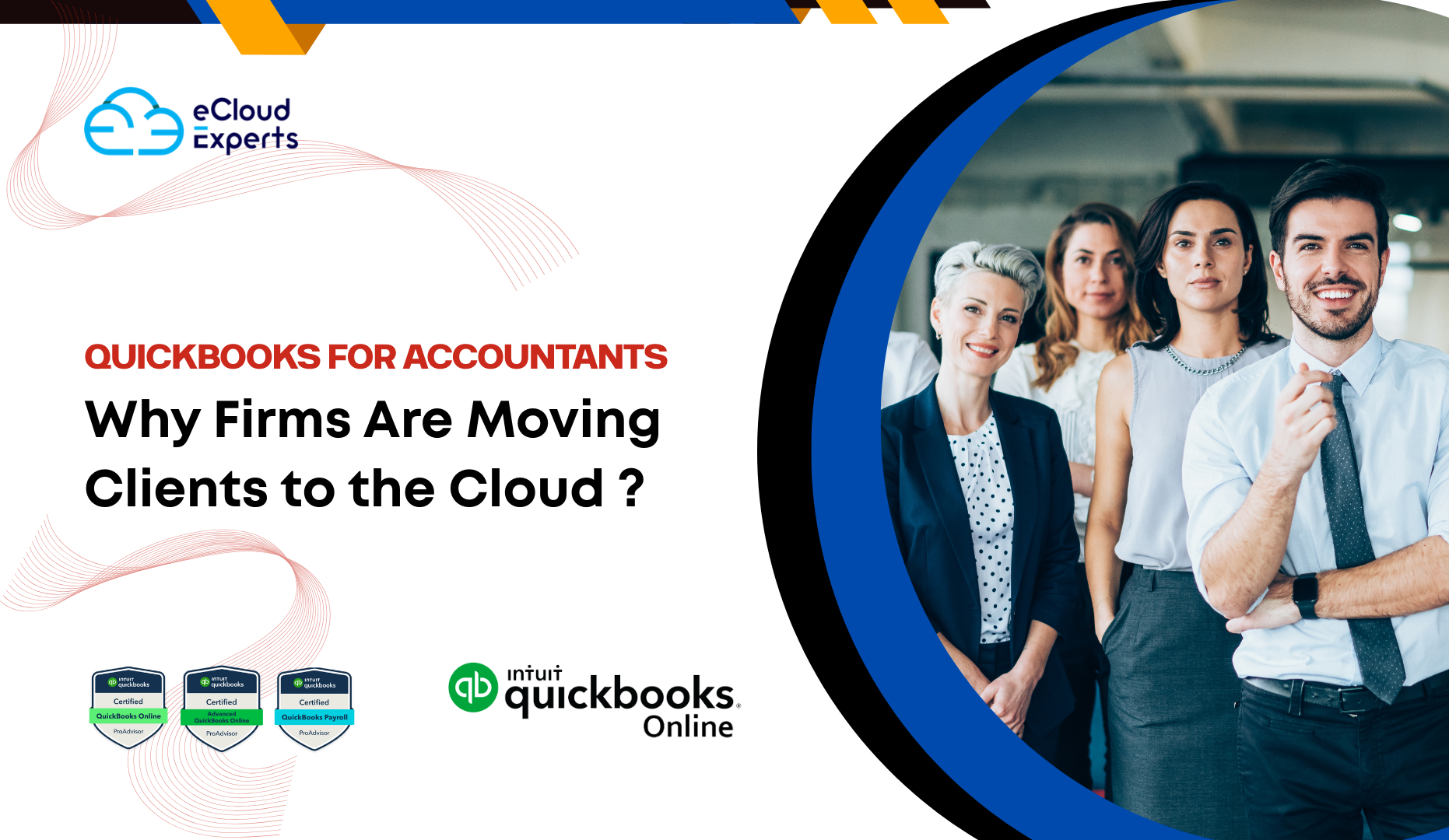Payroll is the heartbeat of any business getting it right is essential for your employees, your compliance, and your peace of mind. If you’re considering payroll migration to QuickBooks Online from Access Dimensions, you’re not alone. Many organisations are leaving legacy payroll systems behind and embracing the efficiency and flexibility of cloud payroll platforms like QuickBooks Online (QBO).
But payroll migration isn’t just about moving data. It’s about ensuring business continuity, protecting sensitive information, and setting up your company for future success. In this comprehensive guide, the payroll migration specialists at eCloud Experts walk you through everything you need to know about migrating payroll data from Access Dimensions to QuickBooks Online.
Why Move from Access Dimensions to QuickBooks Online Payroll?
Businesses outgrow legacy software for many reasons changing regulations, increased complexity, demand for remote access, or the need for seamless integrations. Access Dimensions has long been a staple for many UK organisations, but as business needs evolve, the limitations of desktop-based or on-premise solutions become clearer.
QuickBooks Online Payroll offers:
- Cloud Access: Run payroll securely from anywhere, on any device.
- Automatic Updates: Stay current with HMRC rules, rates, and compliance without manual intervention.
- Integration: Connect payroll with your accounting, HR, and reporting systems for a unified view.
- Scalability: Adapt easily as your team grows or your needs change.
- User Experience: Enjoy an intuitive interface and simple workflows for both payroll admins and employees.
For many finance and HR teams, the question isn’t if they should migrate payroll data to QBO—it’s how to do it effectively.
Challenges of Payroll Migration from Access Dimensions
Payroll software migration is a critical business project, not just an IT task. Moving payroll data from Access Dimensions to QuickBooks Online involves:
- Complex data structures: Different platforms store payroll data in unique formats.
- Historical data: Employers must preserve year-to-date (YTD) information and statutory records for compliance.
- Sensitive data: Payroll contains personal information requiring secure handling.
- Business continuity: Payroll must run accurately and on time during the transition.
This is why partnering with migration experts, like eCloud Experts, reduces risks and ensures a smooth experience.
How to Migrate Payroll from Access Dimensions to QuickBooks Online: Step-by-Step
Migrating payroll data to QBO doesn’t have to be overwhelming. Below, we outline each stage in detail, covering both the practical steps and strategic considerations for a successful Access Dimensions payroll migration.
Step 1: Project Planning and Scoping
Every successful migration starts with a clear plan. Gather key stakeholders—HR, payroll, finance, and IT. Define your goals, timelines, and deliverables. Decide:
- What data will be migrated? (Employee records, historical payroll, statutory deductions, attachments)
- What is your go-live date?
- Who will be responsible for each part of the migration?
- Will you run parallel payrolls during the transition?
A migration project manager or dedicated lead helps keep everything on track.
Step 2: Data Audit and Cleanup
Clean data leads to smooth migrations. Before you extract anything, conduct a thorough audit of your Access Dimensions payroll data:
- Remove inactive or duplicate employees.
- Correct missing or inconsistent National Insurance (NI) numbers, addresses, or payment details.
- Ensure pay elements (basic, overtime, bonuses, deductions) are up-to-date and mapped correctly.
- Archive unnecessary historical data if not required for migration.
Pro tip: Fixing errors now saves major headaches later and reduces the chance of discrepancies after the move.
Step 3: Export Payroll Data from Access Dimensions
With your data clean, export payroll information from Access Dimensions. This usually involves generating CSV or Excel files for:
- Employee details: Names, NI numbers, addresses, contact info, start dates
- Payroll history: YTD figures, pay runs, statutory payments, pension contributions
- Pay elements: Basic pay, variable pay, deductions, tax codes, benefits
Export all required pay periods (current year and previous years, depending on compliance needs).
Tip: Consult Access Dimensions support documentation or work with your IT team to get the most accurate export.
Step 4: Data Mapping for QBO
Every payroll platform structures data differently. This step is crucial for accuracy.
- Map each column from Access Dimensions to its equivalent in QBO (e.g., ‘Surname’ to ‘Last Name’, ‘Pay Code’ to ‘Pay Type’).
- Identify any fields in QBO that require manual entry or reformatting.
- Review QBO payroll templates for bulk import and ensure your data matches the required format.
Data mapping errors are the #1 source of migration issues. Double-check everything, and, if possible, use automated migration tools or scripts to reduce manual input.
Step 5: Import Data into QuickBooks Online
With your data mapped and validated, you’re ready to import into QBO:
- Use QuickBooks’ payroll import tools, following their step-by-step wizard.
- Upload your data files and review the import summary for errors or warnings.
- Some data (like statutory leave balances or student loan deductions) may need manual input.
At this stage:
- Double-check employee details for accuracy.
- Verify that tax codes, pension schemes, and statutory payments align with the latest HMRC guidance.
- Ensure year-to-date (YTD) figures are correctly assigned for the current tax year.
Step 6: Validation and Reconciliation
Validation is where good migrations become great. This step ensures payroll continuity and compliance.
- Run parallel payrolls: For one or two cycles, process payroll in both Access Dimensions and QBO.
- Reconcile output: Match net pay, tax, pension, and deduction figures for each employee.
- Check statutory submissions: Ensure RTI (Real Time Information) and pension submissions align between systems.
- Document and resolve discrepancies immediately.
This stage is vital for confidence, both for management and employees. No one wants payroll surprises.
Step 7: Go Live and Post-Migration Support
Once validated, switch to running live payroll in QBO. Announce the change to employees and provide training or FAQs for new employee self-service features.
Post-migration, you should:
- Monitor the first few payroll cycles closely for any issues.
- Update your payroll calendar and internal controls documentation.
- Schedule regular data audits.
- Ensure backups and security protocols are updated.
A trusted migration partner will also offer post-migration support, helping with troubleshooting, questions, and compliance checks.
Best Practices for Payroll Software Migration
To ensure your migration is seamless, keep these best practices in mind:
- Involve stakeholders early: HR, finance, and IT should all have input and visibility.
- Prioritise data security: Payroll data is highly sensitive. Use encrypted file transfers and ensure only authorised personnel handle data.
- Communicate with staff: Notify employees about the change, especially if self-service portals or payslip formats will look different.
- Leverage automation where possible: Migration tools can reduce manual work and errors.
- Test, test, test: The more thorough your testing, the fewer surprises on payday.
- Document everything: Maintain a detailed migration log for audit purposes and future reference.
Common Mistakes and How to Avoid Them
Avoid these pitfalls when you migrate payroll data to QBO:
- Skipping the data audit: Migrating bad or incomplete data leads to ongoing issues.
- Neglecting historical payroll: Some companies only migrate current year data, but retaining historical data helps with compliance and reporting.
- Poor data mapping: Mismatches between fields cause errors that can be difficult to untangle.
- Rushing validation: Going live before thorough reconciliation is risky.
- Lack of training: Teams need to be familiar with QBO’s payroll features and workflows.
The right migration partner will guide you past these common traps.
Why Trust eCloud Experts for Access Dimensions Payroll Migration?
eCloud Experts is a leading UK provider of cloud accounting and payroll migration services. Our dedicated team has extensive experience helping businesses migrate payroll data to QBO from platforms like Access Dimensions, Sage, and more.
We offer:
- Comprehensive project management: From planning to go-live, we manage every detail.
- Data integrity assurance: We safeguard your sensitive data throughout the process.
- Expert mapping and validation: We know both Access Dimensions and QBO inside out.
- Flexible, tailored solutions: Every migration is unique; we customise our approach to your needs.
- Training and support: We empower your payroll and HR teams to get the most from QBO.
Our proven methodology ensures your payroll migration is accurate, compliant, and stress-free, so you can focus on running your business.
FAQs: Payroll Migration to QuickBooks Online
Q: How long does payroll migration from Access Dimensions take?
A: Timelines vary depending on data complexity and availability, but most migrations can be completed within 2–4 weeks, including parallel runs and validation.
Q: Will I lose any historical payroll data?
A: No. With careful planning and expert handling, all required historical payroll and statutory information can be migrated.
Q: Can we migrate mid-year?
A: Yes. Mid-year migrations are common and require precise YTD mapping, but are entirely achievable with the right support.
Q: What about pensions and HMRC submissions?
A: We ensure all pension schemes and statutory submissions (RTI) are correctly configured in QBO before go-live.
Q: How do you protect our payroll data?
A: eCloud Experts use encrypted transfers, secure systems, and strict access controls to guarantee the safety of your sensitive payroll information.
Ready to Migrate? Speak to eCloud Experts Today
Migrating payroll data from Access Dimensions to QuickBooks Online is a major step towards more efficient, reliable, and future-ready payroll management. With the right process and professional guidance, your migration can be smooth, secure, and pain-free.
Contact eCloud Experts today for a free consultation or to discuss your specific payroll migration requirements. Our team is here to answer your questions and deliver a seamless transition to cloud payroll.

